PICK OF THE MONTH
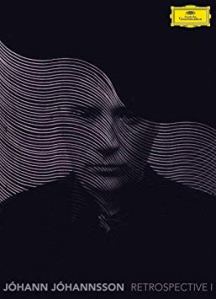 Jóhann Jóhannsson
Jóhann Jóhannsson
Retrospective 1 (7 discs)
Various artists and ensembles
Deutsche Grammophon
00289 483 6582
Composer Jóhann Jóhannsson died tragically and senselessly at the age of 48, but not before leaving behind a rich catalog of music. He was known primarily for his work as a film and theater composer, but he also produced quite a bit of solo work that was not connected or related to other media. He famously said that he had “a strong belief in the power of simplicity and emotional directness,” but that should not lead one to expect his work to actually be simple, though it sometimes comes across that way as the result of careful and even complex design. This seven-disc box contains two freestanding solo releases and five film scores, one of them (White Black Boy) previously unreleased. While his style–often characterized by varied repetition alternating with silence or near-silence and utilizing a mix of orchesral and electronic instruments–is recognizable across most of these albums, one of them is a clear stylistic outlier: Dís is straight-up synth pop, written to accompany a comedic film about life in Jóhannsson’s native Iceland. Another interesting anomaly is The Miners’ Hymns, which was written as the score to a film that did not yet actually exist; American filmmaker Bill Morrison ended up actually creating a movie to suit the soundtrack. Jóhannsson’s soundtrack to Free the Mind is the one that perhaps sounds most like a conventional film score. With the exception of Dís, which is good fun but not particularly exceptional musically, everything here is deeply beautiful. I’m very much looking forward to the next installment in what looks to be planned as an ongoing series of catalog reissues from this composer.
CLASSICAL
 Johann Sebastian Bach
Johann Sebastian Bach
The Well-tempered Clavier (2 discs)
Keith Jarrett
ECM
2627/28
Rick’s Pick
Though this may look like a reissue of Keith Jarrett’s acclaimed 1988 recording of Bach’s iconic collection of preludes and fugues in all the major and minor keys, in fact it’s something different: a previously-unreleased recording of a concert he gave at the famous Troy Savings Bank Music Hall in March of 1987, prior to the release of the studio albums (which are still available in two separate volumes). For this lucky audience he performed the entire work in a single evening, and the sound quality of the recording is absolutely wonderful: clear, rich, and just reverberant enough. But it’s the quality of the playing that makes this album so special. Though in the mid-1980s Jarrett had begun making classical recordings (most notably, at this point, his monumental performance of Arvo Pärt’s Tabula Rasa with Gidon Kremer), he was still known primarily as a jazz and improvising pianist. His sureness of touch and the combination of intellectual and spiritual connection that he clearly felt to this music caught the attention of the classical punditocracy of the moment, and he has gone from strength to strength as a classical pianist since then. This release should be considered an essential purchase for all classical collections.
 Various Composers
Various Composers
Clarinet Classics at Riversdale
Robert DiLutis; Mellifera Quartet
Delos (dist. Naxos)
DE 3561
This is a nicely stylistically varied celebration both of a musical concept–chamber music for clarinet with (or mostly with) strings–and of a venue: the Riversdale House Museum in Maryland, which boasts a restored carriage house that has served as an intimate concert hall in recent years. The program consists of relatively familiar fare, such as Weber’s B-flat quintet for clarinet and strings, as well as more modern and obscure pieces, notable among them Miklós Rósza’s Sonatina and Willson Osborne’s Rhapsody for Clarinet, both of them written for the instrument without accompaniment. The aching lyricism of the Webern work (and of the adagio by Heinrich Joseph Baermann) are nicely complemented by the slightly more angular modernism of the Rósza and Osborne pieces, and everyone’s playing is exemplary.
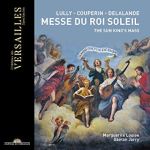 Various Composers
Various Composers
Messe du Roi Soleil
Marguerite Louise / Gaétan Jarry
Château de Versailles Spectacles (dist. Naxos)
CVS008
Imaginative recreations of major royal or liturgical events have become a common feature of the baroque-music landscape in recent decades, and this recording offers “an imaginary service” that combines the various features of “high” and “low” Masses during the reign of the famously musical and devout King Louis XIV–this despite the fact that this performance (recorded live) doesn’t actually feature any Mass content at all; instead, it consists of psalm settings, motets, and organ works by a variety of important composers of the period, including François Couperin, Michel-Richard Delalande, Jean-Baptiste Lully, and François-André Dabican Philidor, in settings ranging from full choir with orchestra to solo, duo, and trio vocalists. The music is exactly as glorious as one would expect, and the live recorded sound is better than one would expect. Perhaps not essential for all classical collections, but recommended nevertheless.
 Wolfgang Amadeus Mozart
Wolfgang Amadeus Mozart
Piano Sonatas
David Fung
Steinway & Sons (dist. Naxos)
30107
As a young budding virtuoso, David Fung gravitated towards the music of Mozart–but his teachers (while encouraging him to master it) warned him not to play it publicly. Maybe they were intentionally using reverse psychology; in any event, at age 22 Fung won the Mozart Prize at the Rubinstein Piano Competition, playing Mozart’s piano concerto number 25. And now we have this very fine recording of Mozart sonatas–an interesting program consisting of three early works (sonatas numbers 2, 4, and 5) and a late one (number 17), allowing us to see in one breathtaking transition the progress that Mozart had made as a keyboard composer between the ages of 19 and 33. Of course, some of what one might call “progress” was simply stylistic change; the early sonatas were written during the early- to mid-classical period, while number 17 came as that period was getting ready to give way to the Romantic era. Fung’s playing is stunning, his sense of line and emotional narrative exceptional. Highly recommended to all classical collections.
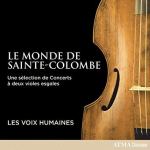 Jean de Sainte-Colombe
Jean de Sainte-Colombe
Le monde de Sainte-Colombe: Une sélection de Concerts à deux violes esgales
Les Voix Humaines
ATMA Classique (dist. Naxos)
ACD2 3021
 Leonora Duarte
Leonora Duarte
The Complete Works
Sonnambula / Elizabeth Weinfield
Centaur (dist. Naxos)
CRC 3685
Here are two very different recordings featuring the viola da gamba in an ensemble setting. Jean de Sainte-Colombe was the teacher of Marin Marais, and the gamba duo Les Voix Humaines presents here a release that features his works for two bass viols. As one would expect given the instrumentation, it’s quite dark and sober in tone. The 67 Concerts a deux violes esgales (twelve of which are presented here) take the form of suites in which the viols take turns functioning as soloist and accompanist, and although the pieces consist mainly of dance movements the tone is still more ponderous and careful than sprightly–but in a good way. As always, the Les Voix Humaines play with brilliant, dark-hued elegance. While Sainte-Colombe is not as famous as his student Marin Marais, he is nevertheless a known quantity among serious fans of early music; Leonora Duarte is a different matter. A Jewish convert to Catholicism living in 17th-century Antwerp, she is the only known woman composer of viol music in that century. All that has survived of her work is a set of seven sinfonias, which survive in a single manuscript copy, and which are presented here in a program that also includes consort and keyboard music by John Bull and Alfonso Ferrabasco, plus one song by Juan del Encina (beautifully sung by the group’s keyboardist, James Kennerley). This program also includes the reading of an essay by Teju Cole; it’s a fine essay, but it’s also included in the liner notes and would have been just fine if left there rather than interrupting the musical program. Both albums are recommended to early music collections.
 Various Composers
Various Composers
Freedom & Faith
PUBLIQuartet
Bright Shiny Things
BSTC-0126
Ths is a highly unusual album of works for string quartet, organized around the theme of “artists whose music represents resilience, resistance, and subversion; all of (whom) also happen to be women.” It opens with the world-premiere recording a relatively conventional string quartet by Jessica Meyer titled “Get into the Now”; “conventional,” that is in its three-movement structure, but wildly less so in its stylistic elasticity, which finds it veering from spiky dissonance to funky joyfulness. One segment of the program is titled Sancta Femina and consists of arrangements of sacred songs by Hildegard of Bingen, Chiara Margarita Cozzolani, and Francesca Caccini; another section is devoted to quirky arrangements of songs associated with Nina Simone, and there’s a very fun vocal-and-strings arrangement of the pop song “A Tisket a Tasket,” based on Ella Fitzgerald’s iconic recording. It ends with a truly lovely one-movement work by Shelley Washington titled “Middleground.” The whole album manages to be simultaneously a hoot and quite thought-provoking, and it evokes some of the Kronos Quartet’s best work of the 1990s.
 Johannes de Lymburgia
Johannes de Lymburgia
Gaude felix Padua
Le Miroir de Musique / Baptiste Romain
Ricercar (dist. Naxos)
RIC 402
Rick’s Pick
Johannes de Lymburgia is a somewhat mysterious figure; historical records place a musician by that name in more places within the same period in the early 1400s than could easily have been occupied by a single person, and there is little trace of him in those records after 1435. What remains of his career output is contained in manuscript Q15 in the International Museum and Library of Music in Bologna–a manuscript that was so damaged over time that it was considered illegible until its recent restoration using digital technology. That restoration made possible this exceptional recording, which shows the composer to have been highly inventive in his approach to harmony and to have been a significant contributor to the development of the motet, which was emerging in his region at the height of his career. The compact Miroir de Musique ensemble performs these sacred songs with restrained intensity, voices twining gorgeously around each other as lutes, harps, viols and citterns provide quiet accompaniment. A must for all early music collections.
JAZZ
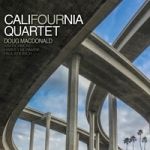 Doug MacDonald
Doug MacDonald
Califournia Quartet
Dmacmusic
DM15
Guitarist/composer Doug MacDonald leads this crackerjack quartet of first-call Los Angeles session players, which includes saxophonist Kim Richmond, bassist Harvey Newmark and drummer Paul Kreibich. “The group is about straight ahead swinging, warm solos and exciting ensembles,” say the press materials, and that’s true–but it doesn’t mean that the group is rehashing old sounds or approaches. Listen to the head on the MacDonald original “Malapropisms,” for example, and you may never guess that it’s a blues; try to follow the changes on his jazz waltz “San Rafael” and you’ll be challenged. On the other hand, Newmark turns those changes into that rarest of things, a genuinely lyrical and compelling bass solo (no mail, please; I’m a bass player myself). And the group’s swing is indeed warm and constant, as is its sense of humor and fun–just take a listen to “I Want It,” MacDonald’s whimsical take on “I Want to Be Happy.” And speaking of warm, MacDonald’s tone is like melted butter.
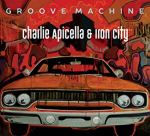 Charlie Apicella & Iron City
Charlie Apicella & Iron City
Groove Machine
OA2
22166
For a very different take on a guitar-led quartet, consider this, Charlie Apicella & Iron City’s third recording. As its title suggests, these guys are mining a vein that was first discovered by similarly-configured ensembles during the “hard bop” era of the early 1960s: whenever you see a group that consists of guitar (Apicella), tenor sax (Gene Ghee), organ (Radam Schwartz) and drums (Alan Corzin), you can reasonably expect to be in for a funky time. But in this case it’s not just funky: there’s a very fun calypso number written by the organist and a gorgeous ballad featuring violinist Amy Bateman, and one or two numbers (including the brilliant “Ironcity”) that feel more like straight-ahead old-school bebop than hard bop or 1960s soul-jazz. But there’s no point in worrying about genre boundaries; Apicella and his crew are simply making great jazz, both new and old.
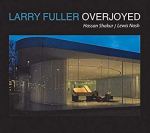 Larry Fuller
Larry Fuller
Overjoyed
Capri
74155-2
Rick’s Pick
The New York Times says that pianist Larry Fuller “sprinkles stardust on whatever song he plays,” and while that could come across as a bit condescending, it’s actually a very apt metaphor: there is, quite simply, something magical about the combination of lightness and power in his playing and about his ability to make every line sound as if it’s sparkling. On his latest album as a leader, Fuller and his trio offer a mixed program of standards and obscurities, plus one original (the utterly delightful “The Mooch,” not to be confused with “Moose the Mooche”). There’s a lot of subtlety at work here: he plays “How Long Has This Been Going On” as a sort of slow drag, for example, playing the gentlest possible stride figures with his left hand while exploring the melody deeply with his right, and his take on the Muddy Waters blues classic “Got My Mojo Workin'” is a second-line arrangement with a typically slippery drum part that takes the program out in fine style. A must for all jazz collections.
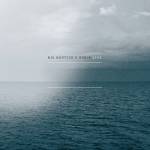 Nik Bärtsch’s Ronin
Nik Bärtsch’s Ronin
Live (reissue)
Ronin Rhythm (dist. Naxos)
RON 004
In feudal Japan, a ronin was a samurai without a master. It’s an apt metaphor for the group that keyboardist and composer Nik Bärtsch has been leading for the last 20 years or so. Well, maybe it’s partly apt; Bärtsch and his team clearly owe no stylistic allegiance to anyone–however, his band most definitely has a leader. Anyway, Bärtsch himself characterizes their music as “zen-funk,” which implies just what you might think: repetition, syncopation, and freedom. Although you’re likely to find their recordings in the jazz section of a record store and they often perform in what looks like a standard piano-trio format, the music they make has as much to do with African, gamelan, minimalism, and, yes, funk as it does with jazz. This reissue of a 2006 live album (actually recorded in 2002) by the band finds them at their most repetitious, and yet strangely also at their most compelling. No one this side of Steve Reich makes such thorough and creative use of a single pattern, and the group is incredibly tight without ever sounding rigid. (Two other early albums, REA and Ritual Groove Music, are being reissued at the same time on Bärtsch’s Ronin Rhythm label.)
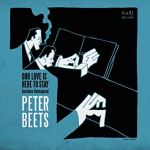 Peter Beets
Peter Beets
Our Love Is Here to Stay: Gershwin Reimagined
Magic Ball Jazz/Challenge (dist. Naxos)
MBJ 74609
Rick’s Pick
Dutch pianist Peter Beets has become a star of the international swing scene, playing alongside the likes of Wynton Marsalis, Johnny Griffin, Kurt Rosenwinkel, and Elvin Jones. His latest album features the melodies of George Gershwin, “reimagined” in that he places them in a variety of rhythmic and stylistic settings: “Embraceable You” as a gentle bossa, “‘S Wonderful” as a sprightly bop workout, and perhaps most surprisingly, “Summertime” as an upbeat swinger. (Watch for the “Jesu, Joy of Man’s Desiring” quote during Beets’ solo on “Lady, Be Good!” too.) Bassist Tom Baldwin and drummer Eric Kennedy follow Beets faithfully wherever he goes, and this whole album is just a ton of good, straight-ahead fun.
FOLK/COUNTRY
 Tui
Tui
Pretty Little Mister
Self-released
No cat. no.
Nothing else sounds quite like a straight fiddle-and-banjo album, and I’ve never heard a fiddle-and-banjo album that sounds quite like this one. Tui is fiddler Libby Weitnauer and Jake Blount, who plays a fretless, nylon-string banjo (and sometimes a five-string fiddle). The music they offer here is a mix of familiar tunes (“Sugar Babe,” “Eighth of January,” “Whoa Mule”) with obscurities dug up in archives and discovered in digital copies of field recordings, many of them drawing on African-American string band traditions that are too often overlooked. (The band’s progressive commitments are signaled by the cleverly punning title, which references the classic fiddle tune “Pretty Little Miss.”) Both are fine singers, and this album offers a great mix of instrumental and vocal tunes. They have an exceptional drive and groove, and as someone who is often skeptical of the nylon-string banjo sound, I have to say that Blount has convinced me–not enough to restring my own instruments, but definitely enough to listen to more like this.
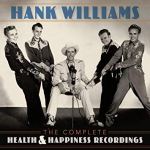 Hank Williams
Hank Williams
The Complete Health & Happiness Recordings (2 discs)
BMG
538470942
The early- to mid-20th century was the heyday of the sponsored, live-performance radio show. You know the format: the host introduces the band and praises the sponsor’s product (Prince Albert Tobacco, Texas Crystals, Jim Walter Homes), then the band plays a few tunes and praises the sponsor’s product, maybe even playing a live jingle. Flatt & Scruggs’ arrangement with Martha White Flour was perhaps the archetypal example of this relationship, and another was Hadacol’s sponsorship of Hank Williams’ Health & Happiness Show, a radio program established in 1949 when he was at the height of his commercial success. The program itself was short-lived: eight shows, all of which aired in October of that year, and each of which followed a strict format (specific kinds of songs, always in the same order, interspered with commercial breaks). This two-disc set brings together all eight of those shows, and while its repetitive nature undermines its enjoyability as a pure listening experience–no one really really needs to hear eight renditions each of “Happy Rovin’ Cowboy” and “Sally Goodin”–it’s hugely important as a historic document; these are the earliest recordings of Williams’ legendary Drifting Cowboys band. Williams’ voice, of course, is hair-raisingly perfect throughout. (And while that of his wife Audrey is often dismissed as unlistenable, I have to say that I think she sounds just fine when she and Hank are singing in harmony.) The new mastering from the original 16″ shellac transcription discs is excellent. For all country music collections.
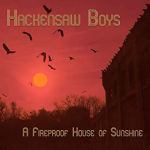 Hackensaw Boys
Hackensaw Boys
A Fireproof House of Sunshine (EP)
Free Dirt
DIRT-CD-0095
The Lynchburg, Virginia-based Hackensaw Boys have been ploughing the field of punk-edged alt-country for over twenty years now, but the version of the band that made this five-song EP is an entirely new one, except for bandleader David Sickmen. And the music they’re making sounds fresh and new: you’ll still hear echoes of Steve Earle and Bob Dylan in Sickmen’s slightly ragged drawl, while the songs range in style from relatively quiet Americana (“Let’s Us Take a Night Ride”) to straight-up acoustic honky-tonk (“Factory Blues”). There’s a bit more politics in there than usual, but it’s incorporated pretty gracefully. Nice stuff.
ROCK/POP
 The Dollyrots
The Dollyrots
Daydream Explosion
Wicked Cool
WKC-68974-2
I’ve been a fan of this band ever since their 2004 debut, which I raved about in the All-Music Guide. Seeing them live at a dive bar in Louisville, Kentucky just solidified my love for them. And now with their seventh full-length album, I can happily report that their sound hasn’t “progressed” at all; it’s maybe a bit more densely packed here, but the core remains what it has always been: bratty, catchy, crunchy pop-punk. Their lyrics are deepening, though. Raising kids and dealing with the loss of a parent has given songs like “Everything” and “I Love You Instead” a dimension that goes beyond cuteness and catchiness and touches on some of the deepest aspects of family life. But they’re still plenty bratty, just as one would hope. And catchier than ever.
 Richard Thompson
Richard Thompson
Across a Crowded Room: Live at Barrymore’s 1985 (2 discs)
Real Gone Music (dist. Redeye)
RGM-0909
Rick’s Pick
Let’s consider the things that make this album amazing: first of all, it could be argued that Richard Thompson was at the peak of his sharpness as both a songwriter and a guitarist in the mid-1980s. (Not everyone would agree, but it could plausibly be argued.) Second of all, look at the band that he had with him on this tour: Clive Gregson and Christine Collister singing harmonies and playing guitars, bassist Rory McFarlane, and drummer Gerry Conway. Now consider the live production by Al Cooper, which borders on studio quality. Then there are the songs themselves: Thompson was touring behind his new album of the same name, which contains some of his tightest, most concise, and frankly angriest songs–songs that pushed him to some of his most explosive live guitar solos. Gregson and Collister sound amazing on “You Don’t Say” and “The Wrong Heartbeat,” and these versions of “Shoot Out the Lights” and “Wall of Death” are nearly definitive. This is not only a very fine live album; it’s one of Richard Thompson’s best albums, period.
 Proem
Proem
Until Here for Years
n5MD (dist. Redeye)
MD274
The fuzzy borderlands that separate avant-garde electronic classical music from experimental electronic pop have always been a fascinating territory to explore, and while one might think that the line isn’t really so fuzzy–that it can be clearly discerned wherever a beat, let alone a groove, is apparent–should give a close listen to the latest from Richard Bailey, a.k.a. Proem. While his burbling, occasionally funky, and always complex… songs? compositions? pieces? whatever… are invariably characterized by a steady beat, they are also based on conceptual sources that are far more sophisticated than what undergirds typical electro-pop, and his production style is characterized by an almost microscopic level of rhythmic and textual detail that rewards close listening. As dark and grumbly as it is, this music is gentle enough that you could let it fade into the background if you want. But if you do, you’ll miss a lot.
 Bluetech
Bluetech
Liquid Geometries in Dub
Liquid Sound Design
LSD116CD
For an interesting juxtaposition to the Proem album, consider this remix treatment of Bluetech’s 2018 album Liquid Geometries. Here the sound is a bit more shiny, and quite a bit less conceptually dense–but every bit as listenable, and sometimes downright fascinating. Producers and electronic artists as diverse as the Desert Dwellers, David Last, the Saafi Brothers, and Gaudi have taken tracks from that album and remixed them to create newly spacious and echo-laden soundscapes. Some of the mixes explore ambient and beatless formats, others create newly reggaefied grooves, and still others hint at dubstep (check out the drop on YOUTH’s remix of “Resonating Heart”). The overall tendency is in the direction of four-on-the-floor house and techno beats, which some listeners will welcome and others may find tedious, but the album is consistently interesting and occasionally transcendent.
 Chris Stamey
Chris Stamey
New Songs for the 20th Century (2 discs)
Omnivore
OVCD-335
Rick’s Pick
OK, this one is pretty remarkable. People of a certain age may immediately recognize Christ Stamey’s name–a founding member of the dBs, he also played with Alex Chilton before the latter formed Big Star. But he’s best known as a producer, having helped to shape the sounds of artists like Pylon, Le Tigre, and Whiskeytown. So basically, he’s one of the foundational architects of alt-pop. But on this album, he assumes a new identity: the long-lost songwriting peer of mid-century pop composers like Richard Rodgers, Jerome Kern, and Henry Mancini. As he tells the story, in 2015 “an old piano arrived at my home, with a bench full of magic“–i.e., sheet music of songs by those and other writers. He immersed himself in them, and when he came up for air he had written a bunch of new material “under the influence.” So he put together a jazz orchestra that included Bill Frisell and Branford Marsalis, among other luminaries, and invited a bunch of his favorite singers to perform them. The result is an unabashedly derivative and completely delightful program of the kind of pop songs that some of us may have heard our grandparents complain that “no one writes anymore”: sophisticated, complex, tuneful, accessible. For all libraries.
 Sverre Knut Johansen with Robert Rich
Sverre Knut Johansen with Robert Rich
Precambrian
Spotted Peccary
SPM-3004
“Sonic visions of a planet in constant change.” That’s the press materials’ characterization of this eerie, rich, complex exercise in ambient tone poetry, a suite of pieces divided by periods of the Earth’s geologic history: there are tracks titled “Hadean Eon,” “Cenozoic Era,” “Anthropocene,” etc. Johansen’s idea was to “create an album around the concept of the Earth’s geological timescale,” trying “to convey with nature sounds what might have hapened on Earth, creating moods around certain events that have taken place.” Johansen is a master at creating the impression of sonic space, and he fills that space with chords, pulses, chirps, otherworldly moans and sighs, and sounds of dripping water and soughing wind. This is the kind of thing that tends to get marketed as ambient music, but I’m not sure it really fits that description; it’s more like complex sound sculpture, and it’s very well done.
 noaccordion
noaccordion
Surrender
Self-released
No cat. no.
Rick’s Pick
If you think that the accordion makes a less-than-obvious bedfellow for trap beats and dubwise electronic production, then I’d have to say that I agree with you. But I would then immediately recommend that you listen to the consistently compelling work of Onah Indigo, who records under the name noaccordion, and who brings a slightly New Agey lyrical orientation to a dense and pungent sonic mix that sometimes evokes African Head Charge (check out the compressed choral vocals on “Allies”), sometimes straddles trap and hip hop (“The Cure”), and sometimes shakes your bones with sub-bass heavyosity (“Grow”). On her latest album she also collaborates fruitfully with reggae star Indubious (“Goodness Rise Again,” in two mixes) and lets her accordion take the lead on the funky-but-wistful “Mars.” As was the case on her previous album (which I recommended back in December 2017), everything here is unique, often surprising, and consistently compelling.
 The Rails
The Rails
Cancel the Sun
Thirty Tigers/Psychonaut Sounds
PSYCHED011CD
The third album from this outstanding British folk-rock outfit finds the duo continuing to expand its stylistic palette–to the point that the designator “folk-rock” may not really make much sense anymore. Yes, there are still jangly and acoustic-based (or at least acoustic-adjacent) songs, like “Dictator” and “Something Is Slipping My Mind.” But they are increasingly being displaced by sardonic rockers like “Ball and Chain,” “Waiting on Something,” and “Save the Planet” (next line: “Kill yourself”; later in the song comes the charming couplet “This is your chance to be a good guy/No one likes you and you know why”). As always, the vocal harmonies of Kami Thompson and James Walbourne are tight and astringently lovely, and the combination of those harmonies with the pair’s deeply winning melodies is a consistent and solid winner.
WORLD/ETHNIC
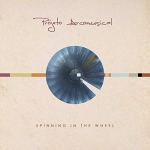 Various Composers
Various Composers
Spinning in the Wheel
Projeto Arcomusical
National Sawdust Tracks
NS-028
The berimbau is a musical bow, an instrument common (in many variants) throughout sub-Saharan African and brought to Brazil centuries ago as a result of the slave trade. It has since been adopted as a Brazilian instrument and plays an important role in traditional music there. Projeto Arcomusical is an Illinois-based ensemble dedicated to raising the profile of the berimbau by commissioning and performing new music for the instrument, and on the group’s second album they perform eight works by four composers, the centerpiece being Elliot Cole’s brilliant and lovely four-movement Roda. Briefer works by Alexis C. Lamb, Gregory Beyer, and Kyle Flens are also featured, and in all cases it’s interesting to hear what the composers do with the instrument’s sonic parameters–which include, for example, a drastically limited pitch range (the members of the group use customized, tunable instruments that increase their melodic flexibility). As on the group’s first album, the sounds are both delicate and percussive, a simplicity of musical means giving rise to significant complexity.
 Soulsha
Soulsha
Carry It On
Fresh Haggis
FH002
At this point it’s no longer particularly innovative to blend African, Celtic, and funk styles together (cf. Afro Celt Sound System, Mouthmusic, Black 47). But that doesn’t mean you can’t make fresh new sounds using that formula, and indeed Soulsha doesn’t sound like any other band. This is partly because the overriding element of their sound is vintage funk rather than electronica or rock; most of the songs on their debut album are built on a solid foundation of James-Brown-style 1960s funk and soul, with occasional irruptions of Celtic tunes (like the interpolation of “Johnny Wilmot’s Fiddle” into the middle of “Rhythm’s in the Melody”) or African elements (like the Wolof rap interlude in “Come on Down”). What it all adds up to is one of the most effective party albums I’ve heard in years–one that will not only have your guests dancing, but will also lead to them asking you “What on earth is this?”.
 Errol Brown & the Revolutionaries
Errol Brown & the Revolutionaries
Culture Dub/Medley Dub (2 discs)
Doctor Bird/Cherry Red
DBCDD-038
What looks at first glance like just another two-LPs-on-one-CD reggae reissue reveals itself, upon closer examination, to be something much more exciting. On disc 1, we have the 1977 release Culture Dub (also released during that period by a different label under the title Culture in Dub). This consists of dub remixes of tracks by the legendary harmony trio Culture; for this reissue, the original eight-track program is augmented by nine bonus tracks, creating a wealth of Culture dubs that fans will be thrilled to have; despite the fact that all but the tiniest snippets of vocals have been removed, those fans will quickly recognize the rhythms to songs like “Iron Sharpen Iron” and “Dog a Nyam Dog” (not to mention several tracks that have been previously been released on Virgin Front Line reissues under different titles, such as “Natty Dub”–a.k.a. “Citizen as a Peaceful Dub”). The second disc in this package, however, consists entirely of material that has either been long out of print or has never been issued on CD before. These are dub versions of popular tracks from Sonia Pottinger’s legendary High Note label, which released some of the most important music of the rock-steady-to-reggae transitional period. You’ll hear outstanding dub versions of classic tracks like “Say You,” “Swing and Dine,” and “Let the Power Fall,” all dubbed up in fine style by producer Errol Brown. This is an outstanding dub collection altogether.